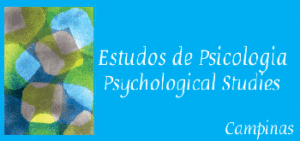Manuela Romo, Full Professor of the Universidad Autonoma de Madrid, Facultad de Psicología, Madri, Espanha
 In this paper, Romo presents her conclusions after reviewing the literature on women and creativity.
In this paper, Romo presents her conclusions after reviewing the literature on women and creativity.
He reviews his componential model of 7 elements (ROMO 1997, 2008) to explain the big or eminent-creativity (the one of those who have gone down in history for their contributions) concluding that there are no differences between men and women regarding mental abilities of creative thinking, motivational or personality characteristics of creative people or absolute dedication to the field. So why are eminent women scarce? the author raises. The answer lies in reasons of sociocultural nature that begin to play their devastating role in childhood. Studies show how from the earliest childhood a differential socialization takes place, for example, with the type of toys for boys and girls where the role of caregivers that the woman has to exercise throughout her life is already being instilled – playing with dolls and with little houses-, giving up, when necessary, his professional vocation when there is one. Recent empirical studies show that although 5-year-old boys and girls consider that adults, both women and men, can be bright and smart, at 6 years the effects of differential socialization have already been internalized and at that age, girls already consider being smart as a male attribute.
This discrimination is perpetuated, because in the areas of decision and assessment of creative production, there are fundamentally men. One example is that of the Nobel prizes where, since its origin, 97% of the winners of Nobel prizes of sciences have been men and, although at the beginning of the last century many women did not compete, the same can not be said at present, where applicants are approximately 50% of each gender.
This is the framework of joint research carried out by Manuela Romo with Solange Weschler from Brazil and Fatima Moraes from Portugal interviewing in depth eminent women from the 3 countries.
The author concludes that this complex and globalized world can not afford to dispense with contributions to the advancement of the culture of half of humanity and that the key to this necessary change lies in education.
References
ROMO, M. Psicología de la creatividad. Barcelona: Paidós, 1997.
ROMO, M. Creatividad en los dominios artístico y científico y sus correlatos educativos. In: MORAIS, M. F.; BAHIA, S. Criatividade: conceito, necessidades e intervenção. Braga: Psiquilibrios Edições, 2008
To read the article, access
ROMO, M. Does creativity have a gender? Obstacles to excellence in women. Estud. psicol. (Campinas), v. 35, n. 3, p. 247-258, 2018. ISSN: 0103-166X [reviewed 20 September 2018]. DOI: 10.1590/1982-02752018000300003. Avaliable from: http://www.scielo.br/scielo.php?script=sci_abstract&pid=S0103-166X2018000300247&lng=pt&nrm=iso&tlng=en
External link
Estudos de Psicologia (Campinas) – ESTPSI: www.scielo.br/estpsi
Como citar este post [ISO 690/2010]:













Recent Comments